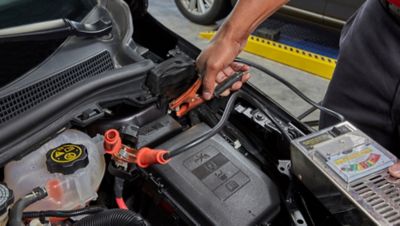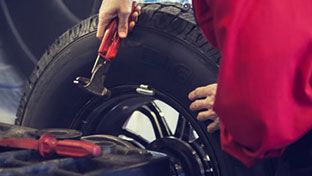For a car owner, how their car sounds as it picks up speed, its horsepower, and how it looks on the outside are all factors that hold great importance. However, the car's acceleration and appearance may not be of much use if the wheels are not in the driver's control or providing traction. This is where the suspension system comes in.
Introduction to Shocks and Suspension Systems
A suspension system might not be necessary if roads all over the world were perfectly flat even where no potholes existed. However, as this is not the case, your vehicle will experience conditions that can impact handling.
When that car hits a bump, it bounces up and falls back down, which means the wheel moves vertically upwards. Without something to hold the wheel into place, all of this energy impacts the frame, which also moves upwards. Without the suspension, the tires can lose contact with the road, letting the car bounce upward and slam back onto the road with the same force.
The importance of shocks and suspension systems is hidden within this logic. They absorb this energy and allow the car to ride on bumpy roads undisturbed by all the hurdles.
Importance of Shocks, Struts and Suspension
The importance of shocks and suspension systems goes beyond maintaining a smooth ride and improving handling. Every vehicle is built with either shock absorbers or struts. The shocks or struts reduce the spring movement once the vehicle begins to experience bumps in the road.
Suspension maintenance is essential as it can prevent our car from absorbing all the negative effects of bumps in the road. We can also experience a much smoother ride and wheel handling. Moreover, a great suspension system can increase the longevity and reliability of our vehicles as it prevents other components from getting damaged over time.
Impact on Vehicle Handling and Comfort
Why do people get suspension upgrades? You may wonder why car owners want to know more about the types of car suspension systems and are always looking out for signs of worn-out shocks and suspension. It is because a suspension system can greatly impact vehicle handling and comfort. Here's how;
Comfortable Driving
Shock absorbers and struts allow you to drive comfortably without experiencing a lot of vibrations and sound as your car navigates the bumps and indents in the road. A well-maintained suspension also allows for less noise and vibration as vehicle speeds increase.
1. Tire Grip
The springs in the suspension system support most of of the vehicle's mass. This is called the sprung mass, while the part of the car that lies below the springs is called the unsprung mass (usually the car's wheels, brakes, and anything else attached to the wheels).
It is important to keep the unsprung mass as low as possible to maintain a comfortable driving experience. The greater the mass the wheels have to support, the more force they may exert as they drive over the bumps. Over time, this force impacts the tires’ grip and can cause premature or irregular wear.
With better suspension systems, traction is increased, allowing the tires to maintain their performance.
Do you think your tire performance has deteriorated, or do your wheels need alignment? Click here to learn more.
Body Roll
The body roll is one of the biggest warning signs of worn-out shocks, struts, and other suspension components. If your car is leaning to the side (much more than normal) when you make a sharp turn, it may be time for a suspension upgrade.
The more body roll a vehicle experiences, the greater the rollover chance during sharper turns. This can be dangerous for drivers.
Components of a Suspension System
Here are some of the important components of a suspension system;
Shock Absorbers vs. Struts
Shock absorbers are primarily responsible for controlling a vehicle's spring and suspension movement. The faster a vehicle moves, the greater the speed of the suspension and the more energy a shock absorber has to deal with. This is offset by the resistance that reduces the effects on the car.
Great quality shock absorbers can prevent;
- Bounce
- Body roll
- Dives and squats
Struts perform the same function as shock absorbers. They are used in most modern cars with independent suspension systems, mostly in front-wheel drive vehicles.
Struts perform the shock absorber function and provide structure to the vehicle's suspension system. Struts can also support the spring and maintain the position of the tires. Suspension maintenance can be optimized with struts as they provide greater stability to the suspension and allow for better handling.
Choosing the right struts and shocks for your vehicle may require you to speak to a professional who can analyze the condition of your car and use their experience to provide the right suggestion.
Springs, Bushings, and Other Essential Parts
Here are some other parts of the suspension system;
1. Springs
The springs are one of the most important parts, as discussed earlier. These absorb the brunt of the impact once the car hits an uneven surface and help prevent damage to the car. The coils in the spring expand and compress as the car hits a pothole, absorbing the dip so that you don't feel a difference.
2. Wheels
The wheels are also integral to the system as they maintain contact with the ground. The better the alignment of the wheels with the suspension system, the better the vehicle's performance.
3. Steering
The steering is what allows you to control the car. Although it isn't a part of the suspension, it is the one component most affected once the suspension system fails. The steering essentially works with the suspension system to be able to control the movement of the tires.
Control Arms, Bearings, and Bushings
The control arms are at the heart of the suspension system. They connect all of the different parts together. The bearings and bushings are required to connect these arms to components of the suspension system and enable smooth movement between those parts.
4. Frame
This supports the mass of the vehicle and holds the suspension components in place.
Types of Suspension Systems
Here are some of the different types of suspension systems;
Conventional Suspension Systems
Conventional suspension systems have existed for decades and are still among the world's most reliable and durable systems. They include;
- Solid Axle Suspension: This is where both wheels on the axle move as one unit and is commonly used in bigger load-carrying vehicles. It includes leaf springs (curved strips of metal) to hold the vehicle's weight and absorb road imperfections
- Multi-link suspension: This uses multiple control arms and links for supporting the vehicle's mass and aligning the wheels.
- Torsion Bar Suspension: This design utilizes pre-tensioned bars to support the vehicles weight and absorb impacts. Torsion bars replace springs in these systems.
- Single Beam Suspension: This is a much more simplified independent suspension system that is usually utilized in smaller front wheel drive cars. A rigid beam connects the rear wheels, limiting the car from bouncing upwards during bumps and encouraging smooth driving.
Independent Suspension Systems
Independent suspension systems allow all four wheels of the car to move independently of one another. This limits vibrations and also disallows one wheel to affect the others.
Air Suspension Systems
A recent introduction in the world of suspension systems, this technology uses air-filled rubber bags or air springs to hold up the car's mass. This feature is usually found in many modern cars, such as SUVs, luxury vehicles, and other commercial vehicles that have been recently introduced to the market.
Air suspension systems allow for an even smoother ride, reduced vibration, increased handling, less fuel consumption, and fewer negative effects on the tires!
How Shocks and Suspension Work
Shock absorbers, struts and a car's suspension system dampen the vibrations that result from bumps in the road. They allow a driver to ride over those bumps more smoothly and increase their ability to handle the car.
Dampening and Rebound
Once you begin to drive that car on the road, you will encounter bumps that can impact your vehicle. These bumps create vibrations that flow through the car. The suspension system can essentially absorb these vibrations and save the car and its occupants from the impact.
The first point of contact after the tires is the springs. As the car moves over a bump, the springs absorb that energy. The energy eventually travels through the spring and is dampened by the shock. This dampening allows the car to avoid impact and reduces spring oscillation.
With the help of the joints, the springs and shocks can move together and minimize vertical movement of the car. In short, the suspension can prevent the tires from lifting off the road, thus giving you a smoother drive.
Role of Shocks and Struts in Maintaining Stability
As mentioned earlier, the shocks or struts can absorb the impact of the bumps on the car and convert the energy into thermal energy, which is released through the car's frame. This is achieved through tiny ports inside the shock or strut that allow fluid within the shock to pass through. The fluid eventually slows down the piston's movement and slows down the springs and the suspension system.
Eventually, this reduced movement prevents the car and the suspension system from getting damaged or receiving more impact from the bump. Without the shocks or struts, the car may lose control due to vertical movement and the entire impact of the bumps on the road.
Impact on Road Handling and Safety
The better the condition of the suspension system, the easier it is for the shocks to absorb the impact with bumps. This prevents steering misalignment and weakened suspension systems. Over time, it maintains the control a driver has on the car.
Want to get your steering linkage inspected? Click here to learn more.
Signs of Worn Out Shocks and Suspension
Here are some signs of worn out shocks and suspension;
Common Symptoms of Suspension Problems
Most suspension problems present themselves in small signs that should be attended to as soon as possible. This includes;
- Nose dives or squats
- Excessive vertical movement
- Body rolls
- Uneven tire wearing
- Reduced handling
- Noises, vibration, or fluid leaks
How to Identify When Shocks Need Replacement
Here are some of the common signs of worn out shocks and suspension that should encourage you to visit your car mechanic;
- Your car seems to dip forward whenever you hit the breaks and your stopping distance has increased
- Your car bounces excessively whenever you hit the tiniest of bumps
- Your vehicle rolls over to one side whenever you experience a sharp turn
- You notice that your tires are wearing unevenly
- You have noted that your vehicle leans backward whenever you hit the gas pedal
- You feel a vibration in your steering wheel that wasn't there before
- You hear knocking or clunking when you drive
- You have been noticing leaking hydraulic fluid that seems to originate from the shocks or struts
All of these are signs that your suspension system might be worn out and that you may need to get your car checked by a professional.
Final Thoughts
A car's suspension system wears over time. This can affect the tires, how the car drives, and how much control you have over the vehicle? Soon, it can get dangerous as the car rolls over to the side when you make sharp turns or bounces into the air when you hit a bump.
It is important to get your car inspected for suspension issues regularly. One of the best tips for maintaining your vehicle's suspension is to watch for any unusual problems and take it to the mechanic once you notice.



